Please click here to access the main AHDB website and other sectors.
- Home
- Knowledge library
- Potato Defect Identification
Potato Defect Identification
A number of defects can arise during harvesting and storage of potato tubers.
Planning ahead, routine maintenance and adapting machinery settings to the conditions are key areas to reducing the risk of damaging tubers and preventing avoidable defects.
Some defects can aid disease development and spread through stored tubers and some will only develop significantly during storage.
Download the potato diseases and defects poster (pdf)
Potato defects gallery
Browse the images below to identify which defects may be affecting your potatoes. Each defect features a link to further information on the symptoms, causes and controls.
Blackheart
Blackheart is an internal defect caused by low oxygen and high carbon dioxide levels in the tuber. It occurs where the respiration demand for oxygen exceeds the available supply.
This might be due to low oxygen levels in the environment, such as field flooding, or high tuber respiration rates, usually in response to temperature extremes.
Crops are most vulnerable around harvest time where respiration rates are likely to be higher.
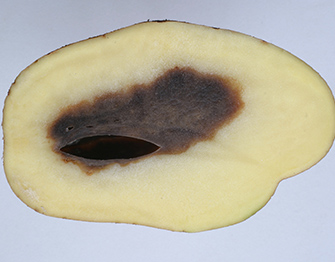
Potato bruising and damage
With blackspot bruising the skin doesn't break but the internal tisues are damaged and appear as black of grey patches.
Damage can be divided into internal fissures and crushing when the skin is intact, which can be difficult to see. Splitting and cracking occurs when the skin breaks and internal tissues are visible.
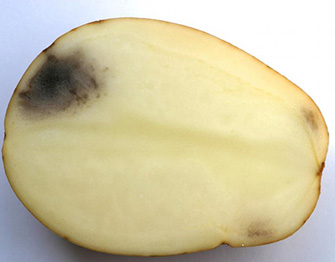
Greening
Exposure of tubers to light, either in the field or during storage, will result in the formation of chloroplasts that contain chlorophyll, the green pigment associated with the irreversible condition called greening.
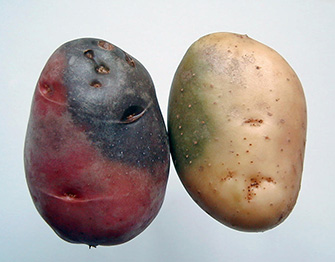
Hollow heart and internal browning
Hollow heart and internal browning are different stages of the same internal defect however they commonly occur separately.
Internal browning is most likely to develop at tuber initiation or when the tubers are small but hollow heart can develop at any tuber growth period.
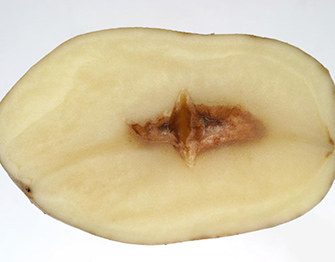
Internal sprouting
Internal sprouting is a physiological condition where a tuber has a sprout growing either inside it or passing through an adjacent tuber.
Sometimes the sprout may furrow the tuber surface. Usually a combination of factors is necessary for the problem to arise.
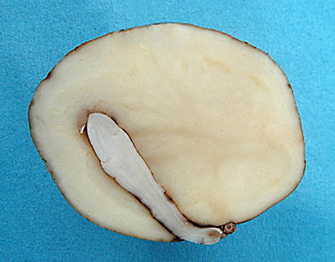
Pit rot
Pit rot is a grouping of defects with similar looking symptoms.
The name refers to the old fashioned straw-covered potato pits or clamps from which the problem was particularly noticeable.
Poor ventilation, high carbon dioxide and low oxygen levels are likely to contribute to the problem.


